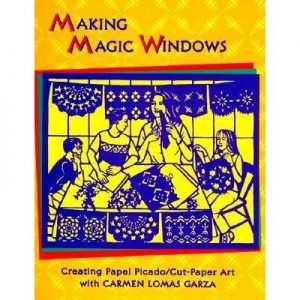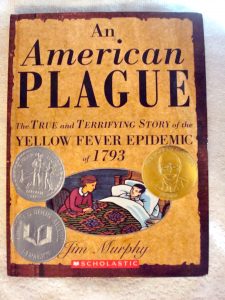 It’s 1793, and there’s an invisible killer roaming the streets of Philadelphia. The city’s residents are fleeing in fear. This killer has a name–yellow fever–but everything else about it is a mystery. Its cause is unknown and there is no cure. This powerful dramatic account by award-winning author Jim Murphy traces the devastating course of the epidemic. An American Plague offers a fascinating glimpse into the conditions in American cities at the time of our nation’s birth while drawing thought-provoking parallels to modern-day epidemics.
It’s 1793, and there’s an invisible killer roaming the streets of Philadelphia. The city’s residents are fleeing in fear. This killer has a name–yellow fever–but everything else about it is a mystery. Its cause is unknown and there is no cure. This powerful dramatic account by award-winning author Jim Murphy traces the devastating course of the epidemic. An American Plague offers a fascinating glimpse into the conditions in American cities at the time of our nation’s birth while drawing thought-provoking parallels to modern-day epidemics.
Information Book
Secrets of a Civil War Submarine: Solving the Mysteries of the H. L. Hunley

On February 17, 1864, the H.L. Hunley made history as the first submarine to sink a ship in battle. Soldiers on the shore waited patiently after seeing the submarine’s return signal. But after several days, the ship had failed to return. What had gone wrong? In 1995, after over 130 years of searching, the H.L. Hunley was finally found buried off the coast of South Carolina.
Days Of Jubilee (Days Of Jubilee)
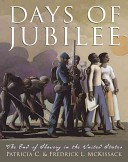
Uses slave narratives, letters, diaries, military orders, and other documents to chronicle the various stages leading to the emancipation of slaves in the United States.
Charro (Spanish-Language)
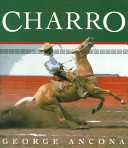
Charro is the Mexican term for horseman, but for a Mexican a charro is much more than a cowboy. A skilled rider of horses and bulls and bucking broncos, an artist with a lariat, and a model of gentlemanly dress and behavior, the charro is also a living symbol of Mexico’s patriotic past. In the rodeo-like sport called la charrería, male charros and female charras, children and adults, show off their skill and daring. But more than that they are showing off their pride in their country–because to be a charro is to be a Mexican.
500 Years of Chicana Women’s History/Anos de Historia de las Chicanans
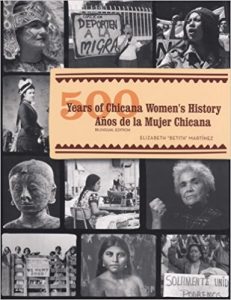 The history of Mexican Americans spans more than five centuries and varies from region to region across the United States. Yet most of our history books devote at most a chapter to Chicano history, with even less attention to the story of Chicanas. 500 Years of Chicana Women’s History offers a powerful antidote to this omission with a vivid, pictorial account of struggle and survival, resilience and achievement, discrimination and identity. The bilingual text, along with hundreds of photos and other images, ranges from female-centered stories of pre-Columbian Mexico to profiles of contemporary social justice activists, labor leaders, youth organizers, artists, and environmentalists, among others. With a distinguished, seventeen-member advisory board, the book presents a remarkable combination of scholarship and youthful appeal. In the section on jobs held by Mexicanas under U.S. rule in the 1800s, for example, readers learn about flamboyant Doña Tules, who owned a popular gambling saloon in Santa Fe, and Eulalia Arrilla de Pérez, a respected curandera (healer) in the San Diego area. Also covered are the “repatriation” campaigns” of the Midwest during the Depression that deported both adults and children, 75 percent of whom were U.S.-born and knew nothing of Mexico. Other stories include those of the garment, laundry, and cannery worker strikes, told from the perspective of Chicanas on the ground. From the women who fought and died in the Mexican Revolution to those marching with their young children today for immigrant rights, every story draws inspiration. Like the editor’s previous book, 500 Years of Chicano History (still in print after 30 years), this thoroughly enriching view of Chicana women’s history promises to become a classic.
The history of Mexican Americans spans more than five centuries and varies from region to region across the United States. Yet most of our history books devote at most a chapter to Chicano history, with even less attention to the story of Chicanas. 500 Years of Chicana Women’s History offers a powerful antidote to this omission with a vivid, pictorial account of struggle and survival, resilience and achievement, discrimination and identity. The bilingual text, along with hundreds of photos and other images, ranges from female-centered stories of pre-Columbian Mexico to profiles of contemporary social justice activists, labor leaders, youth organizers, artists, and environmentalists, among others. With a distinguished, seventeen-member advisory board, the book presents a remarkable combination of scholarship and youthful appeal. In the section on jobs held by Mexicanas under U.S. rule in the 1800s, for example, readers learn about flamboyant Doña Tules, who owned a popular gambling saloon in Santa Fe, and Eulalia Arrilla de Pérez, a respected curandera (healer) in the San Diego area. Also covered are the “repatriation” campaigns” of the Midwest during the Depression that deported both adults and children, 75 percent of whom were U.S.-born and knew nothing of Mexico. Other stories include those of the garment, laundry, and cannery worker strikes, told from the perspective of Chicanas on the ground. From the women who fought and died in the Mexican Revolution to those marching with their young children today for immigrant rights, every story draws inspiration. Like the editor’s previous book, 500 Years of Chicano History (still in print after 30 years), this thoroughly enriching view of Chicana women’s history promises to become a classic.
The Migrant Project: Contemporary California Farm Workers
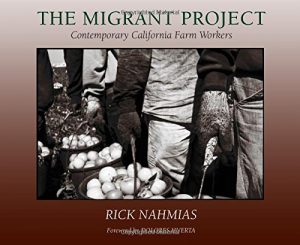 The images in this book highlight the lives of the men and women who struggle to exist while literally feeding this country. Countless words and studies over decades bemoan the plight of those who toil in the fields, but Rick Nahmias’s pictures bring farm workers to us in an unforgettable way, taking us beyond stoop labor stills and into their intimate moments and inner lives. Having traveled over four thousand miles to document California’s migrant workforce, Nahmias’s soulful images and incisive text go beyond one state’s issues, illuminating the bigger story about the human cost of feeding America. The Migrant Project includes the images and text of the traveling exhibition of the same name, along with numerous outtakes and an in-depth preface by Nahmias. Accompanied by a Foreword from United Farm Worker co-creator Dolores Huerta, essays by top farm worker advocates, and oral histories from farm workers themselves, this volume should find itself at home in the hands of everyone from the student and teacher, to the activist, the photography enthusiast, and the consumer.”Every day in the hot fields of California, hundreds of thousands of farmworkers toil for long hours at low pay to provide fruit and vegetables to feed our nation. Most Americans never see the faces of these hard-working men and women, and know little or nothing about the harsh conditions they endure. The Migrant Project has done an extraordinary job documenting these workers’ lives. Rick Nahmias’s powerful photographs and the beautiful essays of dedicated advocates tell an inspiring story of the farmworkers’ historic struggle for the respect, the dignity, and the justice they so obviously deserve.”–U.S. Senator Edward M. Kennedy, Massachusetts “Nahmias’s images starkly capture both the humanity of the farm workers who literally feed our country, and the inhumanity of a system which has kept them and their predecessors prisoners to poverty for decades. This book is a testament to the flesh-and-blood cost of feeding America.”–Arianna Huffington, author, editor-in-chief of The Huffington Post, and nationally syndicated columnistExhibition schedule for The Migrant Project photographs:Mexican Cultural Institute, Washington D.C., February 21-April 14, 2008Museum of Tolerance, Los Angeles, California, March 4-April 25, 2008For more information on immigrant and migrant worker issues, please access the following organizations:Farmworker JusticeCalifornia Rural Legal AssistanceNational Association of State Directors of Migrant EducationNational Council for La RazaInternational Relations Center Americas ProgramCongressional Hispanic Caucus InstituteGlobal Commission on International MigrationInstitute for Agriculture and Trade PolicyNational Farmworker MinistryNational Rural Funders CollaborativeNational Farm Worker AllianceSouthern Poverty Law CenterUMOS Clergy and Laity United for Economic JusticeAmerican Friends Service CommitteeAFL-CIOCoalition for Comprehensive Immigration ReformCatholic Campaign for Immigration Reform
The images in this book highlight the lives of the men and women who struggle to exist while literally feeding this country. Countless words and studies over decades bemoan the plight of those who toil in the fields, but Rick Nahmias’s pictures bring farm workers to us in an unforgettable way, taking us beyond stoop labor stills and into their intimate moments and inner lives. Having traveled over four thousand miles to document California’s migrant workforce, Nahmias’s soulful images and incisive text go beyond one state’s issues, illuminating the bigger story about the human cost of feeding America. The Migrant Project includes the images and text of the traveling exhibition of the same name, along with numerous outtakes and an in-depth preface by Nahmias. Accompanied by a Foreword from United Farm Worker co-creator Dolores Huerta, essays by top farm worker advocates, and oral histories from farm workers themselves, this volume should find itself at home in the hands of everyone from the student and teacher, to the activist, the photography enthusiast, and the consumer.”Every day in the hot fields of California, hundreds of thousands of farmworkers toil for long hours at low pay to provide fruit and vegetables to feed our nation. Most Americans never see the faces of these hard-working men and women, and know little or nothing about the harsh conditions they endure. The Migrant Project has done an extraordinary job documenting these workers’ lives. Rick Nahmias’s powerful photographs and the beautiful essays of dedicated advocates tell an inspiring story of the farmworkers’ historic struggle for the respect, the dignity, and the justice they so obviously deserve.”–U.S. Senator Edward M. Kennedy, Massachusetts “Nahmias’s images starkly capture both the humanity of the farm workers who literally feed our country, and the inhumanity of a system which has kept them and their predecessors prisoners to poverty for decades. This book is a testament to the flesh-and-blood cost of feeding America.”–Arianna Huffington, author, editor-in-chief of The Huffington Post, and nationally syndicated columnistExhibition schedule for The Migrant Project photographs:Mexican Cultural Institute, Washington D.C., February 21-April 14, 2008Museum of Tolerance, Los Angeles, California, March 4-April 25, 2008For more information on immigrant and migrant worker issues, please access the following organizations:Farmworker JusticeCalifornia Rural Legal AssistanceNational Association of State Directors of Migrant EducationNational Council for La RazaInternational Relations Center Americas ProgramCongressional Hispanic Caucus InstituteGlobal Commission on International MigrationInstitute for Agriculture and Trade PolicyNational Farmworker MinistryNational Rural Funders CollaborativeNational Farm Worker AllianceSouthern Poverty Law CenterUMOS Clergy and Laity United for Economic JusticeAmerican Friends Service CommitteeAFL-CIOCoalition for Comprehensive Immigration ReformCatholic Campaign for Immigration Reform
Making Magic Windows: Creating Papel Picado/Cut-Paper Art with Carmen Lomas Garza
Magic Windows / Ventanas Mágicas
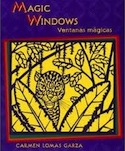
In Spanish and English, Carmen Lomas Garza portrays her family’s Mexican customs and her life as an artist, and the legends of her Aztec past through cut-paper work (papel picado).
Voices From The Fields: Children Of Migrant Farmworkers Tell Their Stories
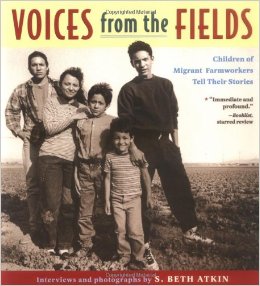
Interviews with nine children of Hispanic migrant farm workers reveal some of their struggles, such as the long hours in the fields and the language barriers at school, and their aspirations for a better life.
The Piñata Maker / El Piñatero
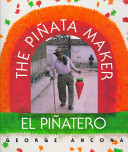
Told in both English and Spanish by award-winning author-photographer George Ancona, The Pinata Maker/El pinatero documents this traditional Latin American artform and includes a note on how to make pinatas at home. Set in Mexico.

